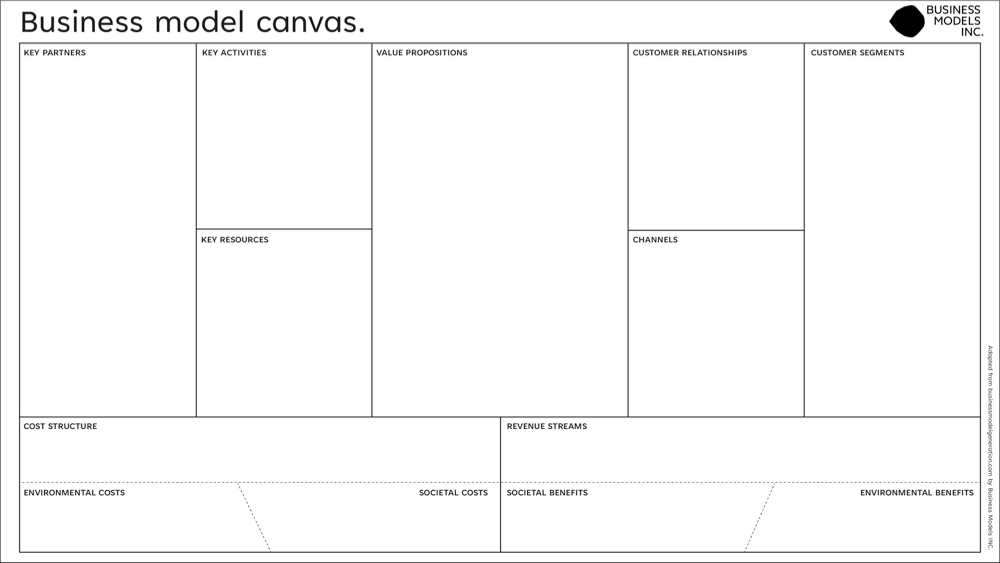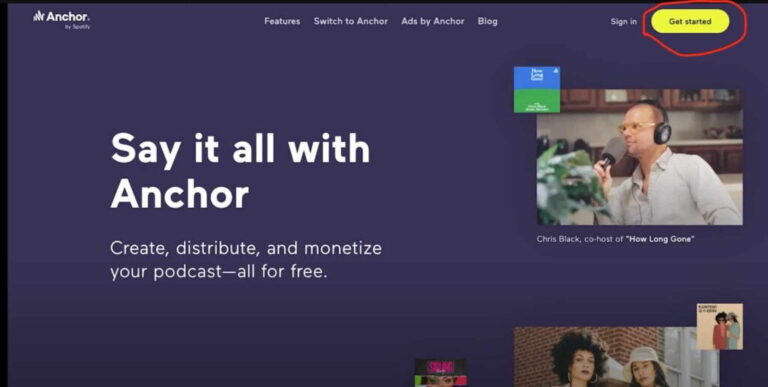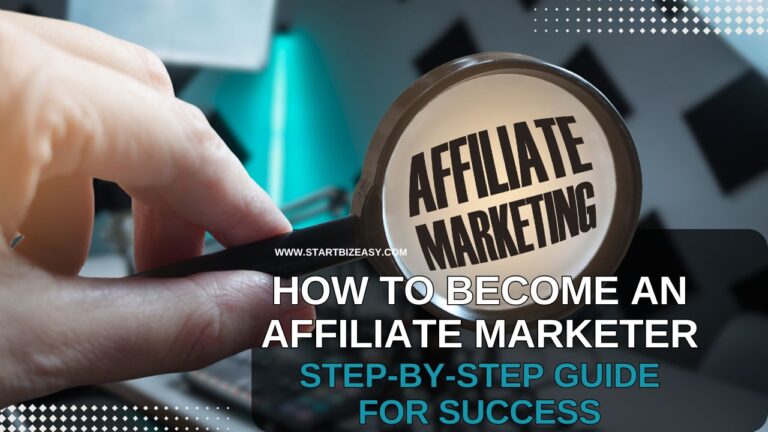what is business model canvas? A strategic management tool called the Business Model Canvas enables you to represent and evaluate your business model visually.

It’s crucial to have a clear and concise method of comprehending and expressing your company’s value proposition, revenue streams, and cost structure in the fast-paced and constantly-changing business world.
Since Alexander Osterwalder first introduced it in his book “Business Model Generation,” it has grown to be a popular tool for business planning and development.
We’ll discuss the Business Model Canvas in this article, including what it is, how it functions, and how you can use it to enhance your business plan.
Table of Contents
What is the Business Model Canvas?
The Business Model Canvas is a one-page framework that visually represents the nine essential elements of a business model. These elements include:
- Value Proposition: The distinct benefit that customers receive from your good or service.
- Customer segments: The particular customer groups for whom your product or service is designed.
- Channels: The methods by which customers are reached with your good or service.
- Customer relationships: The various connections your company has with its clients.
- Revenue Streams: The various ways in which your company generates revenue.
- Key Activities: The crucial tasks that your company carries out to produce and transfer value.
- Key Resources: The vital materials needed to provide your good or service.
- Key Partners: The crucial suppliers or partners your company needs to function.
- Cost structure: The expenses incurred by your business.
The Business Model Canvas gives you a comprehensive and organized view of your business model, making it simple to pinpoint opportunities for development and growth
How to Use the Business Model Canvas
Using the Business Model Canvas is a straightforward process. Here are the steps you can follow:
- Step 1: Start by printing out a blank Business Model Canvas template, which you can easily find online.
- Step 2: Start by filling out the canvas’s customer segments section. This will assist you in identifying and comprehending the needs of your target market.
- Step 3: Continue to the section on value propositions and explain the distinct benefit that your product or service offers to your target market.
- Step 4: Next, complete the channels section by listing the various avenues through which you will provide your customers with your good or service.
- Step 5: Continue by filling out the section on customer relationships, which describes the different kinds of relationships your company has with its customers.
- Step 6: After defining your target markets, value proposition, distribution channels, and customer relationships, you can move on to the revenue streams section and decide how your company will make money.
- Step 7: After determining your revenue streams, go to the section on key activities and list the most crucial tasks needed to produce and provide value to your clients.
- Step 8: Complete the sections for key partners and resources by listing the crucial partners and resources needed to run your business.
- Step 9: Lastly, complete the cost structure section of the form by listing all of the expenses involved in running your company.
You ought to have a thorough understanding of your business model by the end of this process and be able to pinpoint opportunities for development.
Benefits of Using the Business Model Canvas
Using the Business Model Canvas has a number of advantages, including:
- Improved communication: Stakeholders, investors, and team members can easily understand your business model thanks to the Business Model Canvas.
- Holistic view: A holistic view of your business model is provided by the canvas, allowing you to spot opportunities for growth and improvement.
- Simplified planning: By separating the key components, the canvas streamlines the business planning procedure of your business model into a single page.
- Flexibility: The canvas is flexible and can be easily adapted to changes in your business or market.
- Collaboration: In order to analyze and improve the business model, teams can work together using the canvas as a collaborative tool.
Common Challenges When Using the Business Model Canvas
The Business Model Canvas is an effective tool for examining and improving your business model, but using it can present a number of common problems or difficulties. These difficulties include:
- Lack of detail: Because the canvas is intended to be a high-level overview of your business model, it occasionally lacks detail.
- Over-simplification: The canvas can sometimes oversimplify complex business models, making it difficult to accurately represent all the important details.
- Bias: Because the information on the canvas is based on the perspective of the person filling it out, it may contain bias.
- Incomplete information: If you don’t have a complete understanding of your business model, the canvas may not accurately represent your business.
- Failure to update: If you fail to update the canvas regularly, it can quickly become outdated and lose its usefulness.
Read Also:
- What are the 5 elements of a business model?
- What are the 4 types of business models?
- What is a Basic Business Model?
Conclusion:
The Business Model Canvas is an effective tool that can assist you in fully comprehending your business model and pinpointing opportunities for growth and improvement.
The canvas provides a structured and visual representation of your business by breaking down your business model into nine key components, making it simpler to communicate with stakeholders and team members.
The canvas is a useful tool for businesses of all sizes and stages of development even though there are some common challenges associated with using it.
You can gain a competitive edge and guarantee long-term success by integrating the Business Model Canvas into your company’s planning and development process.
FAQs
Can the Business Model Canvas be used for any type of business?
Yes, the canvas can be used for any type of business, from start-ups to established corporations, as it is made to be flexible.
Is the Business Model Canvas only useful for new businesses?
No, businesses of all sizes and stages of development can use the canvas. Regardless of how long you’ve been in business, it’s a helpful tool for analyzing and optimizing your business model.
Do I need any special skills to use the Business Model Canvas?
No, regardless of their level of business experience, anyone can use the canvas because it is made to be user-friendly.
Can the Business Model Canvas be used in conjunction with other business planning tools?
Yes, the canvas can be used in conjunction with other business planning tools, such as SWOT analysis, PEST analysis, and Porter’s Five Forces, to provide a more comprehensive understanding of your business.
Is the Business Model Canvas a static tool, or can it be updated?
A dynamic tool, the canvas can be updated as your company grows and changes. For the canvas to accurately reflect your current business model, it must be reviewed and updated on a regular basis.
Discover more from StartBizEasy
Subscribe to get the latest posts to your email.





